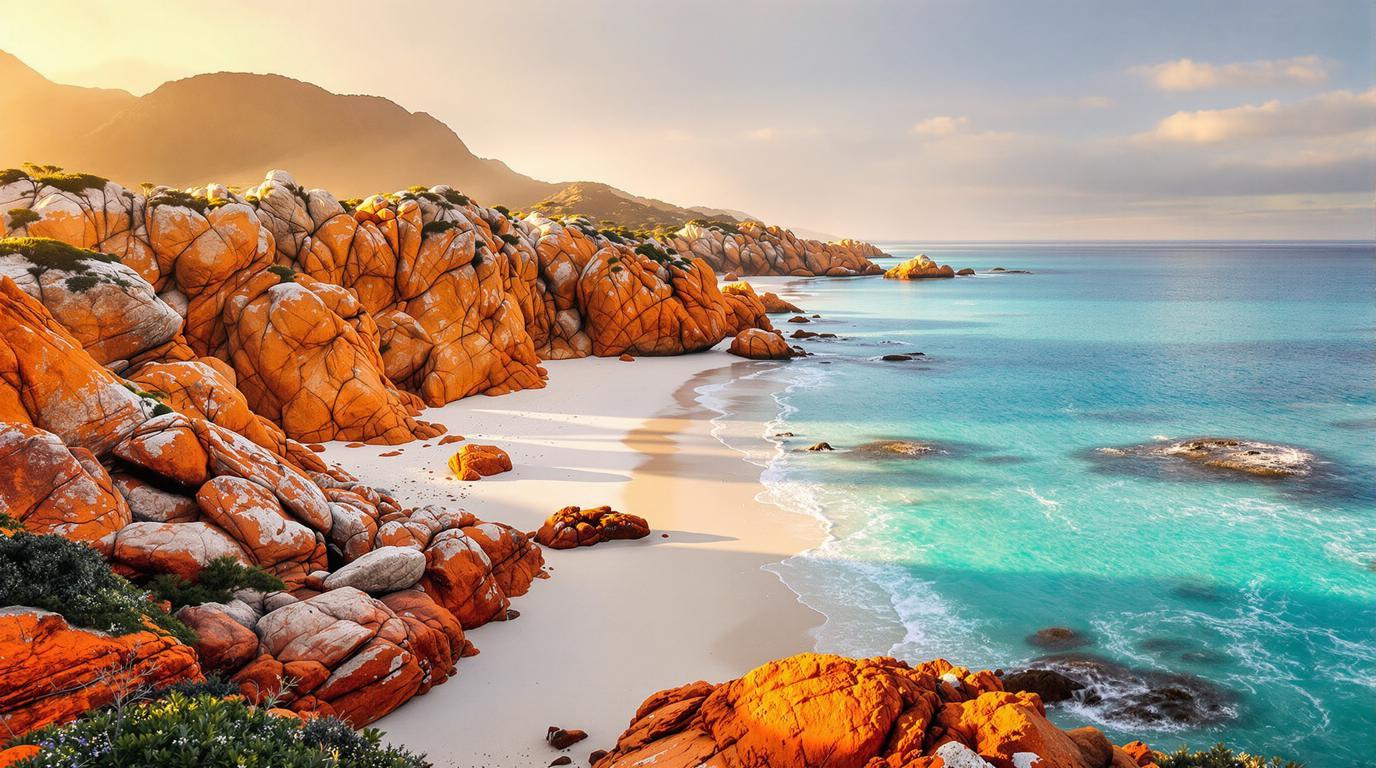We stood speechless at the edge of Tasmania’s Bay of Fires, where nature had painted a masterpiece with contradicting elements. Brilliant white sand stretched before us, so pure it squeaked beneath our boots. What truly captivated us, though, were the massive granite boulders adorned with vibrant orange lichen that gave this pristine coastline its name – not from fires, but from this striking natural palette against turquoise waters.
A wilderness campsite like no other
After hiking along empty beaches framed by these fiery-colored rocks, we pitched our tent at Cosy Corner North, one of several free campgrounds dotting this 30-mile coastal paradise. The sand beneath our tent was impossibly white – rivaling even the Caribbean-blue waters of hidden French islands – but with zero crowds.
“The magic of Bay of Fires isn’t just its beauty, but its accessibility,” shared Jake, a Tasmanian guide we met. “You can literally camp right on world-class beaches here without permits or fees, something increasingly rare worldwide.”
Orange sentinels from another world
The iconic orange-stained boulders create a photographer’s paradise, especially at sunrise when they glow like embers against the gentle morning light. This distinctive color comes from Caloplaca lichen that thrives in the clean, salty air. Aboriginal Tasmanians called this area larapuna long before Captain Tobias Furneaux named it in 1773, spotting Aboriginal fires along the coast.
This coastline tells two stories – one of ancient Aboriginal connection spanning thousands of years, and another of natural processes creating this unusual palette of orange, white, and turquoise.
Beyond the beaches: forest trails and hidden coves
While the beaches rightfully steal attention, inland trails through coastal heathland offer encounters with wallabies, echidnas, and native birds. We hiked from Swimcart Beach to Sloop Reef, discovering secluded coves accessible only by foot – each seemingly more pristine than the last.
The solitude here reminds me of those hidden Greek beaches where camping means absolute freedom – except here, it’s completely free.
Crystal waters and midnight stars
Swimming in these waters feels surreal – the clarity rivals crystalline lagoons found in Italy’s hidden mirror-like coves. But nature saved her most spectacular show for nightfall. With zero light pollution, the southern hemisphere’s stars create a celestial canopy so bright it cast shadows on our tent.
“Many visitors rush through in a day,” said Sarah, a local conservation guide. “They miss the real Bay of Fires experience – falling asleep to waves and waking to the pink glow of dawn on those orange rocks.”
Practical paradise: what you should know
The Bay of Fires stretches from Binalong Bay to Eddystone Point in Tasmania’s northeast. The southern section offers free camping with basic facilities (pit toilets only), while the northern section requires a parks pass. No reservations needed – simply arrive and find your slice of paradise.
Unlike Scotland’s beach runways with scheduled arrivals, timing here depends on your preference – summer (December-February) brings warmer swimming temperatures but more visitors. Fall (March-May) offers perfect hiking weather with fewer people.
Getting there: Tasmania’s scenic journey
Most visitors fly into Launceston, then drive two hours east to St Helens (the gateway town). While not as dramatic as America’s mountain-revealing train journeys, the scenic drive provides its own rewards through Tasmania’s rural countryside.
Our final night camping on that impossibly white sand, watching stars reflect in tide pools while orange rocks stood sentinel against the darkening sky, crystallized something profound: sometimes the world’s most extraordinary places aren’t the hardest to reach, but simply those most perfectly composed by nature’s artistic hand.
